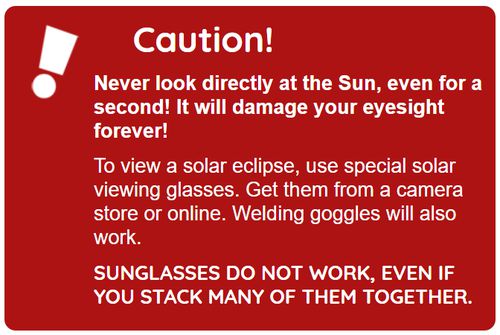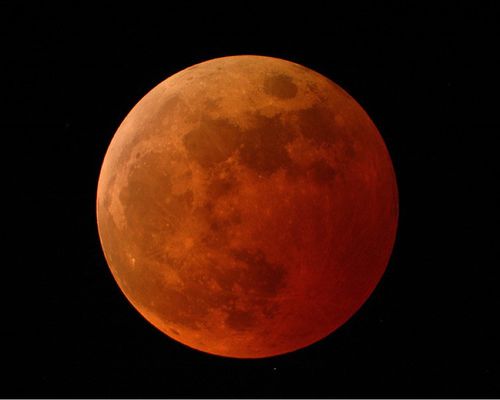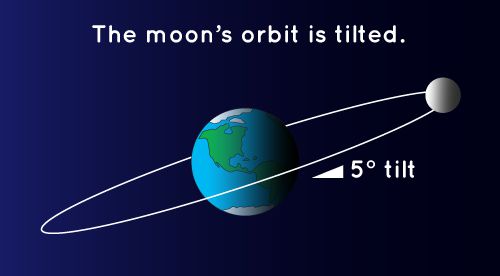This video explains a solar eclipse. Watch it a few times.
This is a video of a solar eclipse in 2017 in the USA. It is interesting to see.
The next video explains a lunar eclipse.
This video explains the lunar eclipses especially for school children, so maybe a little easier to understand.
Below is a copy of your reading in Readworks. In your assignment called ‘The Moon and the Sun’ there is a passage called ‘Lunar Eclipses and Solar Eclipses’
Listen and read along in English with the audio feature above the passage in Readworks. Then read about the solar and lunar eclipses in Chinese below.
An eclipse happens when a planet or a moon gets in the way of the sun’s light. Here on Earth, we can experience two kinds of eclipses: solar eclipses and lunar eclipses.
当行星或月亮进入太阳光时,就会发生日食。在地球上,我们可以经历两种日食:日食和月食。
What’s the difference?
有什么区别?
Solar Eclipse 日食
A solar eclipse happens when the moon gets in the way of the sun’s light and casts its shadow on Earth. That means during the day, the moon moves over the sun and it gets dark. Isn’t it strange that it gets dark in the middle of the day?
当月亮进入太阳光,并投射到地球上的阴影时,就会发生日食。这意味着在白天,月亮在太阳上移动,它变暗。半夜变黑,这难道不奇怪吗?
This total eclipse happens about every year and a half somewhere on Earth. A partial eclipse, when the moon doesn’t completely cover the sun, happens at least twice a year somewhere on Earth.
这次日全食大约每年发生一年半在地球上的某个地方。日偏食,当月亮不能完全覆盖太阳时,每年至少在地球上的某个地方发生两次。
日食图

NASA
Note: This diagram is not to scale.
注意:此关系图不缩放。

Romeo Durscher 罗密欧·杜尔舍
In this picture, the moon is covering up the sun in the middle of the day. This total solar eclipse was visible from the northern tip of Australia on November 13, 2012.
在这张照片中,月亮在天中遮住了太阳。2012年11月13日,澳大利亚北端出现这次日全食。
But not everyone experiences every solar eclipse. Getting a chance to see a total solar eclipse is rare. The moon’s shadow on Earth isn’t very big, so only a small portion of places on Earth will see it. You have to be on the sunny side of the planet when it happens. You also have to be in the path of the moon’s shadow.
但并不是每个人都经历每一次日食。有机会看到日全食是罕见的。月球在地球上的阴影不是很大,所以地球上只有一小部分地方会看到它。当它发生时,你必须站在地球阳光明媚的一面。你也必须在月亮的阴影路径。
On average, the same spot on Earth only gets to see a solar eclipse for a few minutes about every 375 years!
平均而言,地球上的同一地点每375年只能看到几分钟的日食!

NASA
Lunar Eclipse 注意:此关系图不缩放。
During a lunar eclipse, Earth gets in the way of the sun’s light hitting the moon. That means that during the night, a full moon fades away as Earth’s shadow covers it up.
在月食期间,地球会妨碍太阳光照射月球。这意味着,在夜间,满月随着地球的阴影遮住它而消失。
The moon can also look reddish because Earth’s atmosphere absorbs the other colors while it bends some sunlight toward the moon. Sunlight bending through the atmosphere and absorbing other colors is also why sunsets are orange and red.
月球也可以看起来红,因为地球大气层吸收其他颜色,而它弯曲一些阳光向月球。阳光在大气层中弯曲并吸收其他颜色也是日落是橙色和红色的原因。
During a total lunar eclipse, the moon is shining from all the sunrises and sunsets occurring on Earth!
在月全食期间,月亮从地球上发生的所有日出和日落中闪耀!

NASA
Note: This diagram is not to scale. 阳光警告

NASA
The moon appears orange-red in a total lunar eclipse on October 27, 2004.
2004年10月27日,月全食中,月亮呈橙色红色。
Why don’t we have a lunar eclipse every month?
我们为什么不每个月都有月食呢?
You might be wondering why we don’t have a lunar eclipse every month as the moon orbits Earth. It’s true that the moon goes around Earth every month, but it doesn’t always get in Earth’s shadow. The moon’s path around Earth is tilted compared to Earth’s orbit around the sun. The moon can be behind Earth but still get hit by light from the sun.
你可能想知道为什么我们每个月没有月食,因为月球绕着地球转。月球每个月都绕着地球转,但并不总是进入地球的阴影。与地球绕太阳的轨道相比,月球绕地球的轨道是倾斜的。月球可以在地球上后面,但仍被太阳的光击中。

月球轨道倾斜
NASA
In this diagram, you can see that the moon’s orbit around the Earth is at a tilt. This is why we don’t get a lunar eclipse every month. This diagram is not to scale: the moon is much farther away from Earth than shown here.
在这张图中,你可以看到月球绕地球的轨道处于倾斜度。这就是为什么我们不每个月都会月食的原因。这张图不是要缩放的:月球离地球的距离比这里显示的要远得多。
Because they don’t happen every month, a lunar eclipse is a special event. Unlike solar eclipses, lots of people get to see each lunar eclipse. If you live on the nighttime half of Earth when the eclipse happens, you’ll be able to see it.
因为它们不是每个月都会发生,月食是一个特殊的事件。与日食不同,很多人可以看到每一次月食。如果你在日食发生时住在地球的一半,你就能看到它。
Remembering the Difference 记住差异
It’s easy to get these two types of eclipses mixed up. An easy way to remember the difference is in the name. The name tells you what gets darker when the eclipse happens. In a solar eclipse, the sun gets darker. In a lunar eclipse, the moon gets darker.
很容易把这两种类型的日食混为一谈。记住差异的一种简单方法是在名称中。这个名字告诉你当日食发生时会变暗。在日食中,太阳变暗了。在月食中,月亮变暗了。
Here is a short fill in the blanks quiz about the solar and lunar eclipses. click here
ReadWorks® is a Registered Trademark | © 2020
Leave a Reply